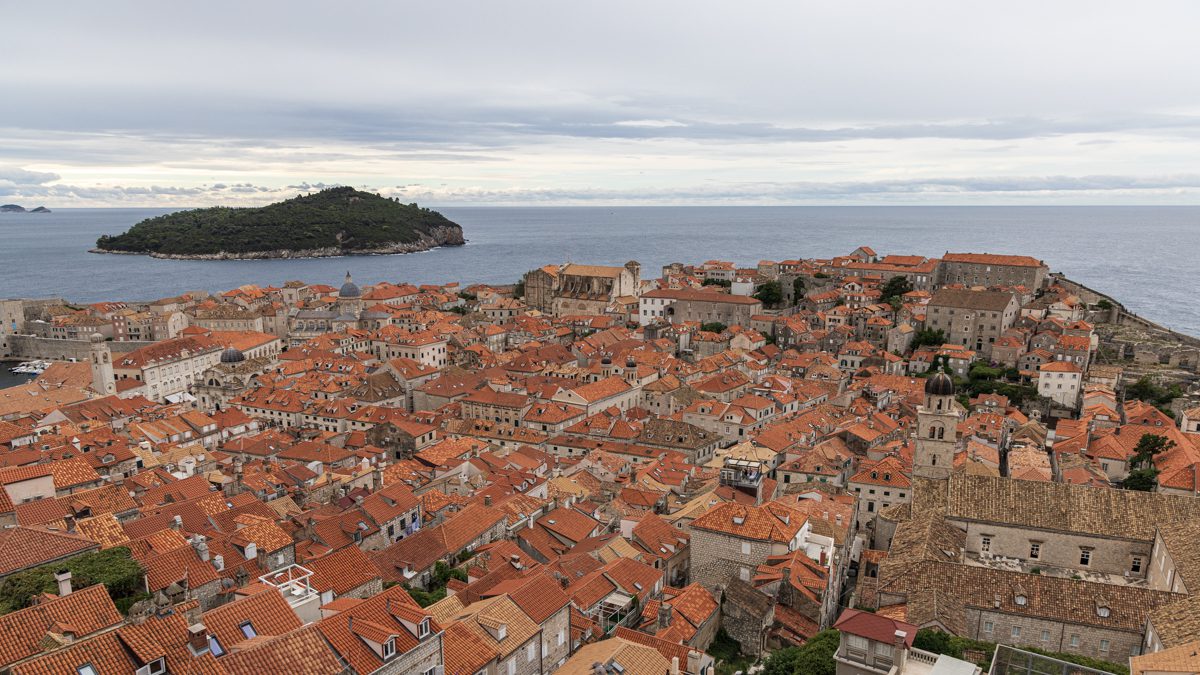
DUBROVNIK
The city was established by refugees from Epidaurum in the 7th century. It was protected by the Byzantine Empire at first, and thereafter by Venice. Dubrovnik was a free state from the 14th to the 19th century, and its economy was mostly dependent on sea trade. It gained notoriety for its wealth and diplomatic prowess in the 15th and 16th centuries.
Dubrovnik was listed as a UNESCO World Heritage Site in 1979. The city’s stunning Gothic, Renaissance, and Baroque architecture was preserved despite being badly destroyed by an earthquake in 1667 and by the damage caused by the war of 1990s.
Dubrovnik’s most stunning feature are its 2 km long city walls. At some points they are 25 meters high and offer breathtaking views of the city and the nearby Lokrum Island.
During the golden age of the Republic (from the 14th century until it was dissolved by Napoleon in1808) it had a unique system of governance – Rector’s rule. Rector only served for one month (don’t be surprised), had to be at least 50 years old and after serving his term could not be reelected for another two years. During his term, he was was required to live in the Rector’s Palace, separated from his family. This system was inspired by Venice and its main goal was to prevent abuse of power.
Here’s a breakdown of key events in Dubrovnik’s history:
Venetian Rule (1205–1358)
Dubrovnik (then Ragusa) fell under Venetian control through a treaty in 1205 after the Fourth Crusade. The city adopted Venetian institutions but regained independence in 1358 by becoming a vassal of the Kingdom of Hungary.
Ottoman Influence (1382–1806)
While never fully conquered, Dubrovnik became a tributary state of the Ottoman Empire in 1382, paying annual fees for protection while retaining self-governance. This arrangement allowed it to thrive as a neutral trading hub until the early 19th century.
Napoleonic Conquest (1806–1814)
Napoleon’s forces occupied Dubrovnik in 1806, violating earlier alliances. By 1808, Marshal Auguste de Marmont abolished the Republic of Ragusa and incorporated it into the French Illyrian Provinces. The French imposed blockades and ended centuries of Ragusan independence.
Austrian Annexation (1815–1918)
After Napoleon’s defeat, the 1815 Congress of Vienna transferred Dubrovnik to the Austrian Empire. It remained part of the Kingdom of Dalmatia until the Austro-Hungarian Empire collapsed in 1918.
20th-Century Conflicts
- World War II: Occupied by Italian and later German forces during the Nazi-controlled Independent State of Croatia2.
- Croatian War of Independence (1991–1992): Yugoslav People’s Army (JNA) forces besieged Dubrovnik for seven months, damaging 56% of buildings—including UNESCO-protected sites—and killing 194 defenders and 82–88 civilians. Croatian forces lifted the siege in May 1992.
Notable Sieges That Failed to Conquer
- 1185 Siege by Stefan Nemanja: Serbian forces breached walls but were repelled with French assistance.
- 15th–18th Centuries: The city’s walls and diplomacy thwarted repeated Venetian and Ottoman attacks.

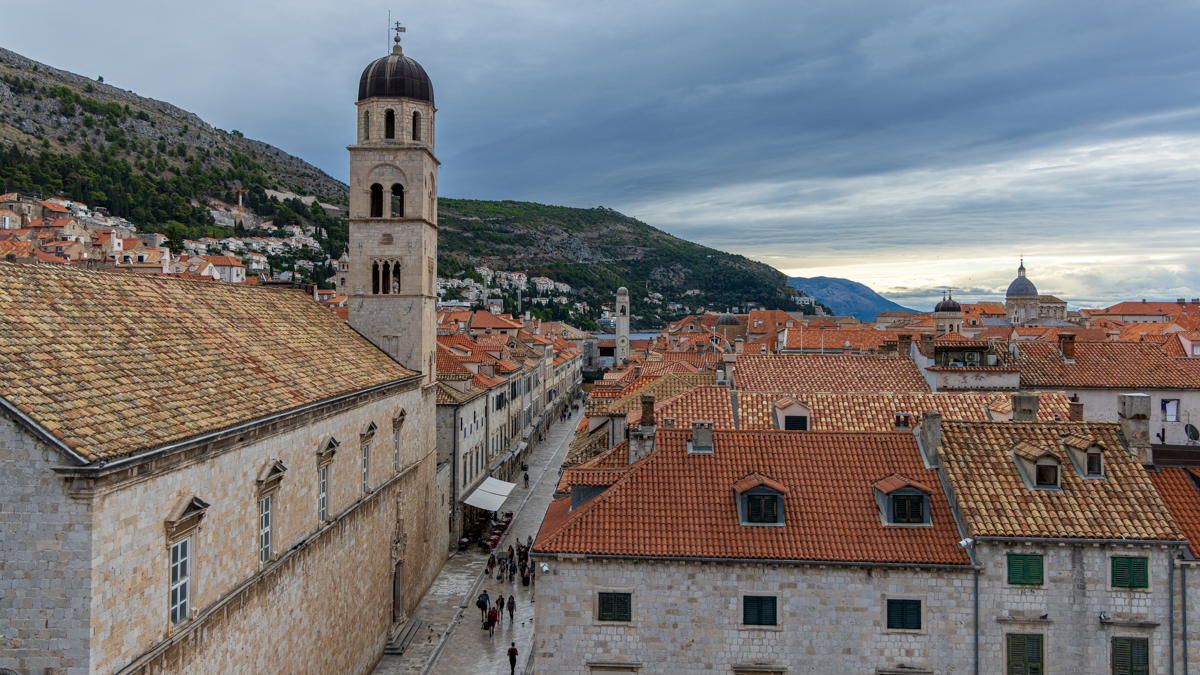
Stradun, also called Placa, is the central street and heartbeat of Dubrovnik’s Old Town. Spanning 300 meters from the Pile Gate in the west to the Ploče Gate in the east, this limestone-paved pedestrian street is rich in history and cultural importance. Originally a marshy channel that separated two settlements, Stradun was formed in the 11th century by filling in the area, merging Ragusa and Dubrava into one city. The street’s present-day look mainly reflects the rebuilding efforts following the destructive 1667 earthquake, which introduced uniform construction guidelines.
It is lined with uniform Baroque buildings featuring shops on the ground floor and residential spaces above. No balconies were allowed after the earthquake.
Most of the landmarks are just short distance away from the Pile gate: Onofrio’s Fountain, Franciscan Monastery, Dubrovnik Bell Tower, Rector’s Palace and the Old Port.
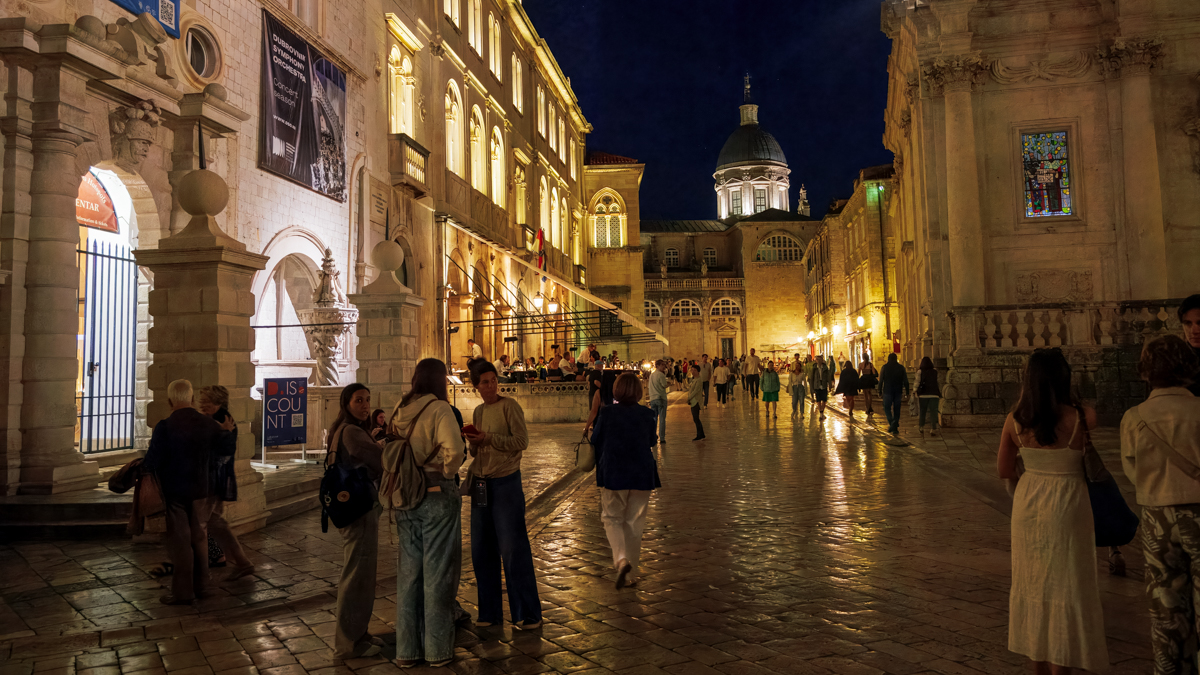
And more pictures from of the old city
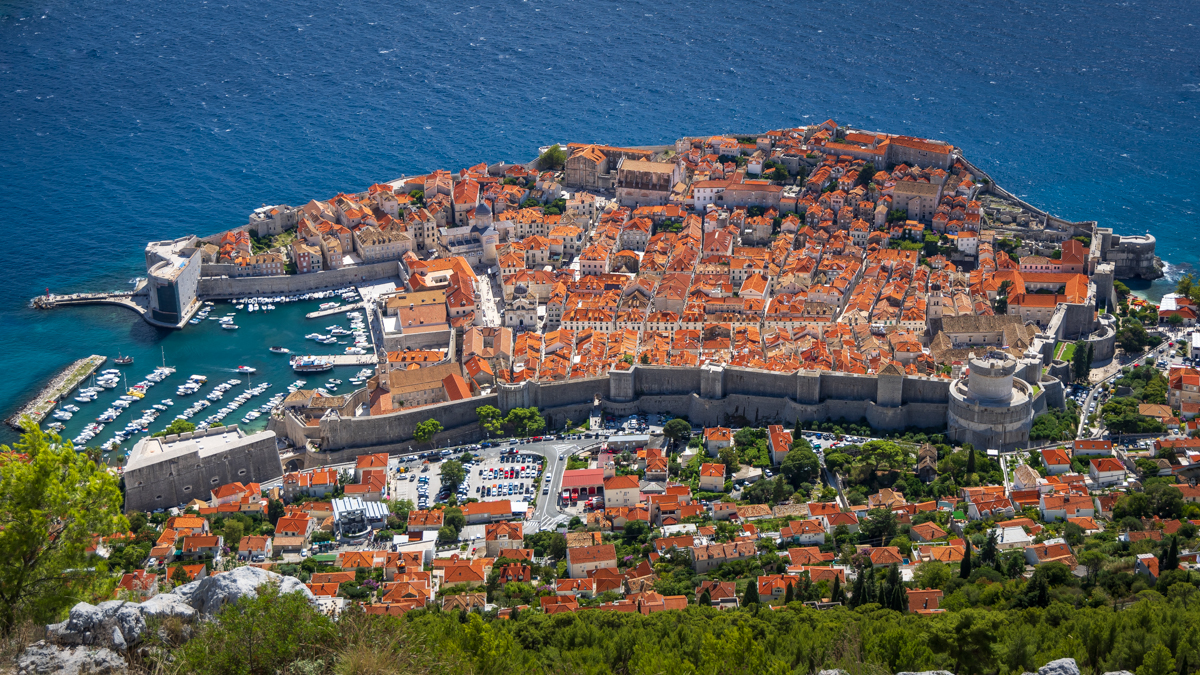
LOKRUM
The link below tells the story of the curse of the Lokrum Island:
https://www.dubrovnik.com/index.php/discover/islands-and-countryside/69-the-lokrum-curse?utm_source=perplexity

ELAPHITI ISLANDS
We went on a day trip by Karaka boat from Dubrovnik.
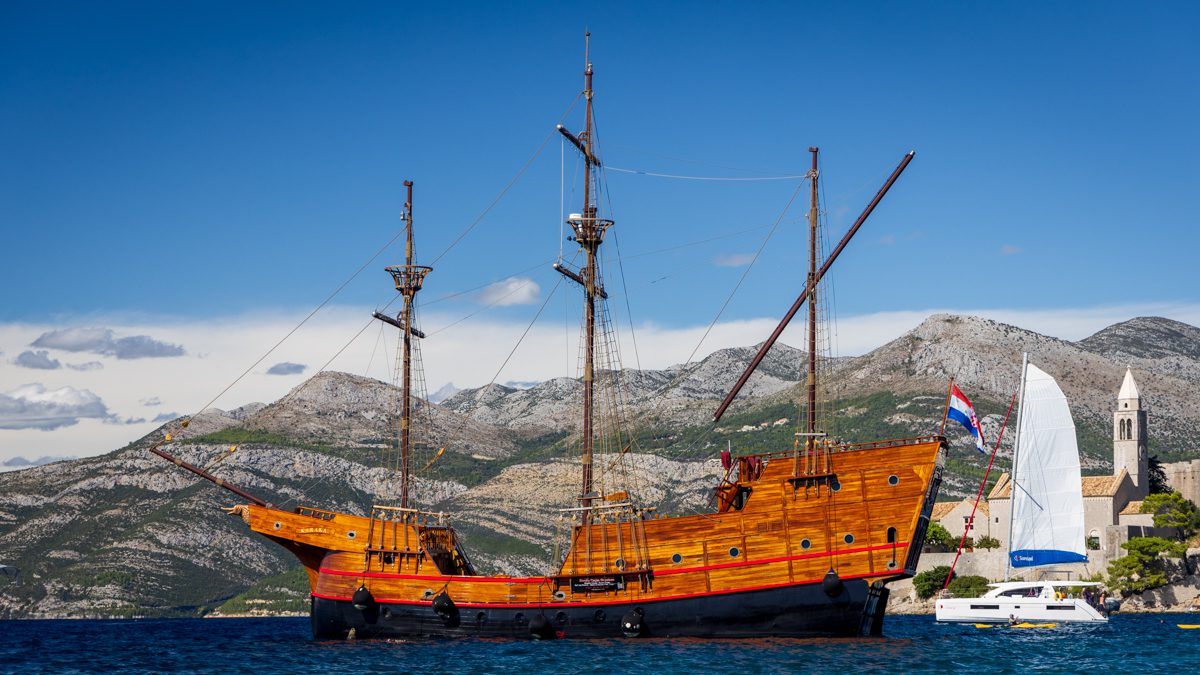
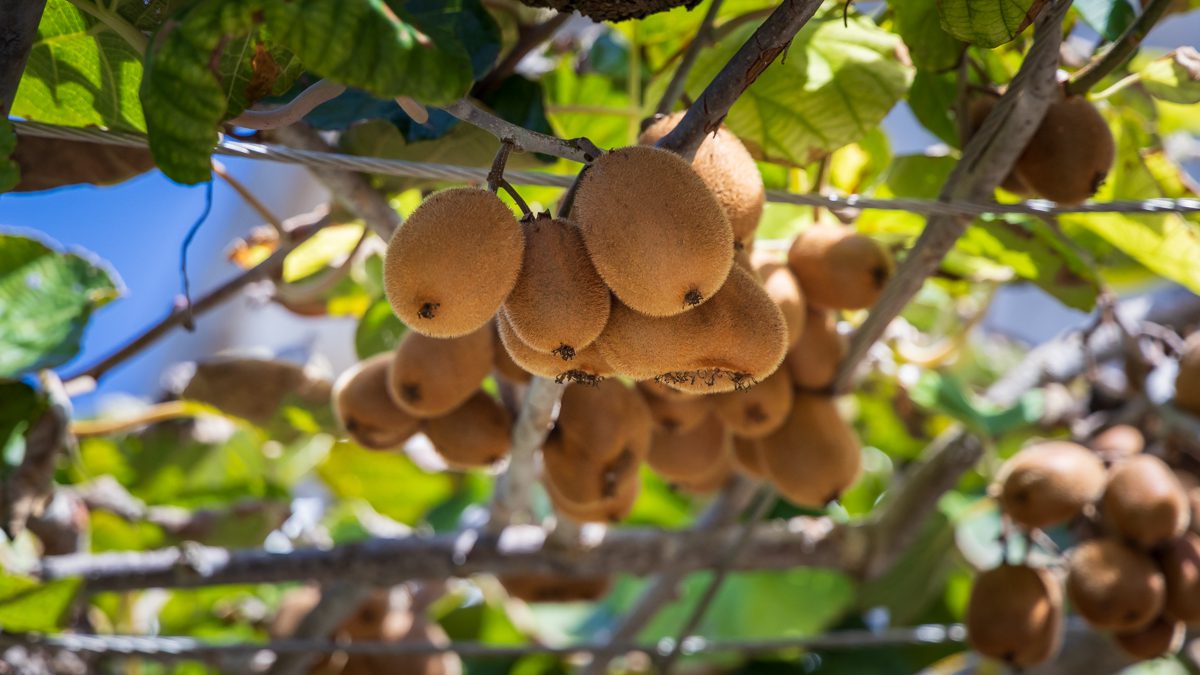
ISLANDS OF KORCULA AND MLJET
Korčula is definitely one of the most beautiful islands in Croatia known for its rich history and natural beauty. It was established by Greek colonists from Corfu in the 6 century BC. Later it came under Roman and then Venetian rule. The island is famous for its stunning coastline, beaches, olive groves and vineyards. Croatia’s most famous wine Pošip (pronounced Poship) is produced here.
The old town of Korčula, located on the island’s eastern coast, is a prime example of a fortified medieval Mediterranean town. Its streets are arranged in a herringbone pattern to allow air circulation while protecting against strong winds.
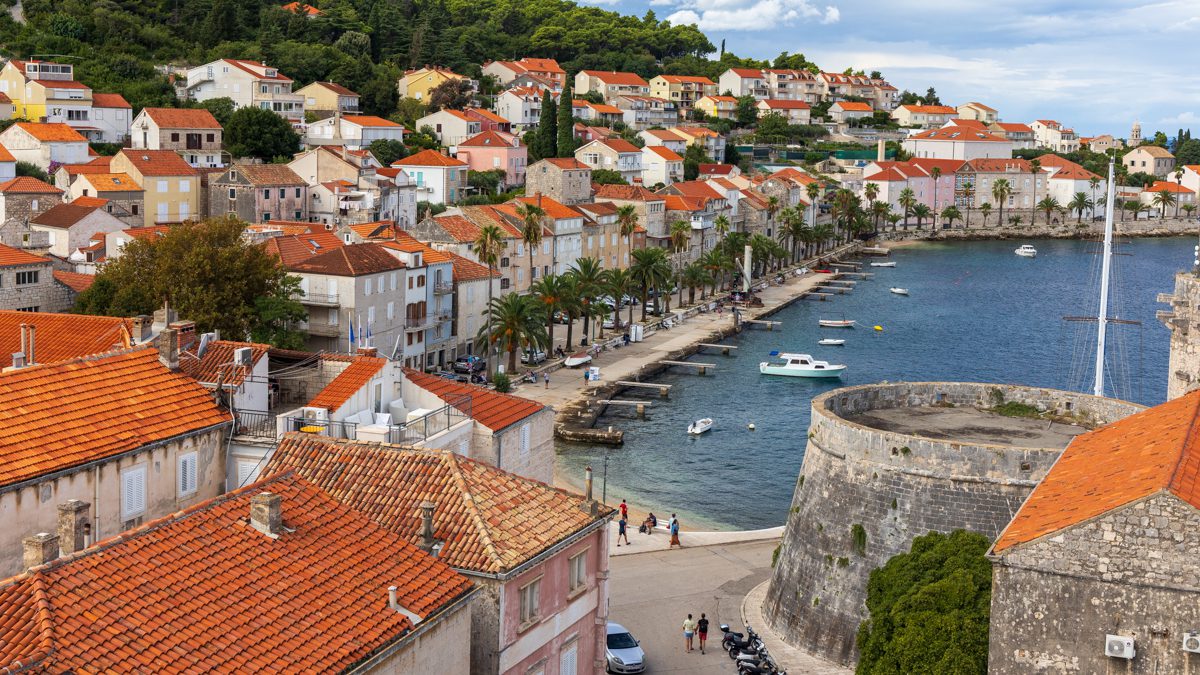
Vitis winery below produces some of the best and well known wines in Croatia: Pošip, Plavač Mali and Grk.
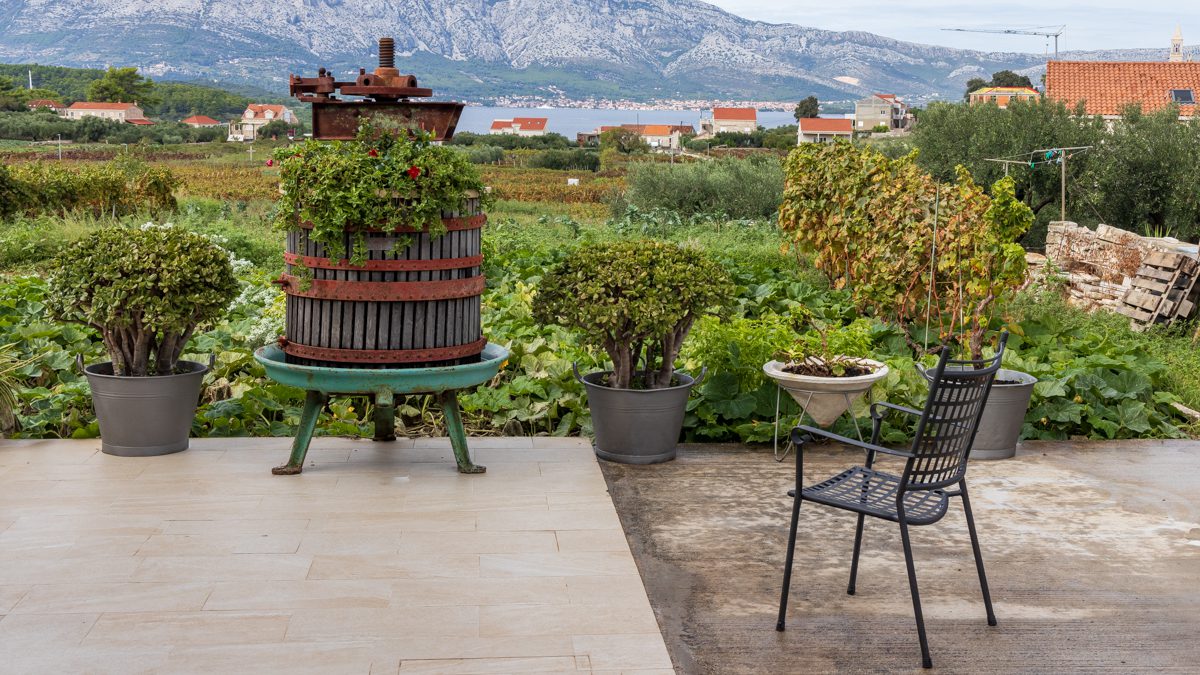
Moreška is a traditional sword dance that has been performed in Korčula, Croatia, for over 400 years. This captivating performance symbolizes a battle between two groups, originally representing Christians and Moors, but later evolving to depict a conflict between Moors and Turks. There is a performance every Thursday in the old town but it was unfortunately moved indoors due tio the pouring rain. Still it was amazing to watch.
While in Korcula, we also took a day trip to another magnificent island – Mljet, a true haven for nature lovers. It is a short ferry ride from the old town of Korčula. The island’s national park is stunning, it covers 5300 hectares and has two saltwater lakes.
The Benedictine Monastery dating to 1151 pictured below is one of he oldest church complexes in the Adriatic.
